Description
The instruction for medical use of LAKOMA-T medicine the Trade name of Lakoma-T the International unlicensed name Is not present the Dosage form of the Drop eye the Structure of 1 ml of solution contains active agents: latanoprost – 0.05 mg, Timololum a maleate – 6.834 mg are equivalent Timololum of 5.000 mg, excipients: potassium dihydrophosphate, dinatrium hydrophosphate anhydrous, a benzalkoniya chloride, sodium chloride, polioksit 40 hydrogenated castor oil, water for injections. The description Pure, transparent and colourless solution without foreign particles. Pharmacotherapeutic group Drugs for treatment of diseases of sense bodys. Drugs for treatment of diseases of eyes. Protivoglaukomny drugs and miotik. Beta blockers. Timololum in a combination with other drugs. The ATX S01ED51 code the Pharmacological Pharmacokinetics of Pharmacokinetic Interactions properties between latanoprosty and Timololum a maleate it is not established though in 1-4 hours after use of the combined drug the concentration of acid of the latanoprost in watery moisture was approximately twice higher, than at monotherapy. Latanoprost Latanoprost, being a pro-dosage form, it is soaked up through a cornea where there is its hydrolysis to biologically active acid. It is established that concentration in watery moisture reaches a maximum approximately in two hours after topical administration. The volume of distribution is 0.16 ± 0.02 l/kg. Acid of the latanoprost is defined in watery moisture within the first 4 hours, and in blood plasma – only within the first hour after topical administration. Latanoprost is exposed to hydrolysis in a cornea under the influence of esterases with formation of biologically active acid. The latanoprost acid coming to a system blood stream is metabolized, generally in a liver by beta oxidation of fatty acids with formation of 1,2-dinor- and 1,2,3,4-tetraholes-metabolites. Acid of the latanoprost is quickly removed from blood plasma (t1/2 =17 min.). The system clearance is about 7 ml/min. Metabolites are removed, generally by kidneys: after topical administration with urine about 88% of the entered dose are removed. The bioavailability of the latanoprost in the form of acid is 45%. Timololum a maleate Concentration of Timololum of a maleate in watery moisture reaches a maximum approximately in 1 hour after use of eye drops. A part of a dose is exposed to system absorption, and the maximum concentration in blood plasma making 1 ng/ml is reached in 10-20 minutes after use of drug on one drop in each eye once a day (300 mkg/days). Elimination half-life of Timololum of a maleate makes about 6 hours of plasma. Timololum the maleate is actively metabolized in a liver. Metabolites and also a number of not changed maleate Timololum, are removed with urine. A pharmacodynamics two active components – latanoprost and Timololum a maleate are a part of drug. The mechanism of decrease in the increased intraocular pressure (VGD) at these components is various that provides additional decrease in VGD in comparison with the effect which is reached at use of each of these components in the form of monotherapy. Latanoprost – F2α prostaglandin analog – is selection agonist of receptors of a prostanoid of FP and reduces VGD due to increase in outflow of watery moisture, mainly, in the uveoskleralny way and also through trabecular network. It is established what latanoprost has no significant effect on products of watery moisture and on a blood-ocular barrier. During short-term treatment latanoprost does not cause infiltration of a flyuorestsein in a back segment of an eye at a psevdofakiya. At use in therapeutic doses latanoprost does not render significant pharmacological effect on cardiovascular and respiratory systems. Timololum – non-selective beta-1- and beta 2 – adrenoblocker which has no significant internal sympathomimetic activity has no direct depressive impact on a myocardium or the local anesthetizing (membrane stabilizing) effect. Blockade of beta adrenoceptors causes decrease in warm emission in healthy people and patients with heart diseases. At patients with heavy dysfunction of a myocardium beta blockers can inhibit the stimulating effect of sympathetic nervous system necessary for adequate cardiac performance. Blockade of beta adrenoceptors in bronchial tubes and bronchioles leads to increase in resistance of airways under the influence of parasympathetic nervous system. The similar effect can be dangerous to patients with asthma and other bronkhospastichesky diseases. Maleate Timololum use in the form of eye drops causes decrease in the raised and normal VGD irrespective of existence or absence of glaucoma. The raised VGD is a major factor of risk of glaukomatozny loss of fields of vision. The VGD is higher, the probability of glaukomatozny loss of fields of vision and injury of an optic nerve is higher. The exact mechanism of decrease in VGD under the influence of Timololum of a maleate is not installed. Results of a tonografiya and flyurofotometriya demonstrate that the main mechanism of action can be connected with reduction of formation of watery moisture. However, in some researches also small increase in outflow is noted. Action of a combination of the latanoprost and Timololum of a maleate begins within an hour, and the maximum effect is observed within 6-8 hours. Indications – decrease in the increased intraocular pressure (VGD) at patients with an open angle glaucoma or the raised intraocular tension at insufficient efficiency of other reducing VGD of medicines for topical administration. A route of administration and doses the Adult on one drop in the affected eye once a day. If during a course of treatment one dose is passed, treatment has to continue, as usual, from the following dose. It is impossible to dig in in the affected eye more than one drop a day. Before burying eye drops the contact lenses need to be removed, in 15 minutes they can be put on again. If the patient at the same time uses other ophthalmologic drugs of topical administration, then it is necessary to apply with an interval not less than 5 minutes. When closing a century for 2 minutes the system absorption decreases. It can lead to easing of system side effects. Course of treatment on doctor’s orders. Side effects Side effects are classified by frequency as follows: very often (& gt, 1/10), it is frequent (& gt, 1/100, & lt, 1/10), infrequently (& gt, 1/1000, & lt, 1/100), is rare (& gt, 1/10.000, & lt, 1/1000) and is very rare (& lt, 1/10.000). Disorders of nervous system: Infrequently: Visual disturbance headache: Very often: the increased pigmentation of a cornea. Often: eye irritation (including pricking, burning and an itching), eye pain, perhaps irites Infrequently: reddening of an eye, conjunctivitis, blurring of sight, the increased lacrimation, blepharitis, disturbances of a cornea of Disturbance of skin and hypodermic fabrics Infrequently: skin rash, naggers Soobshchalos about the additional side effects characteristic of use of separate components of drug: For the latanoprost: – an infection and a new growth – the herpetic keratitis – disorders of nervous system – dizziness – eye disorders – changes of eyelashes and a vellus hair (the increased length, thickness, pigmentation and quantity) – a dot erosion of an epithelium, near-orbital hypostasis, an iritis/uveitis, macular swelled (at afakichesky, psevdofakichesky patients with a rupture of back capsules of a crystalline lens or at patients with the known risk factors of macular hypostasis) – xerophthalmus, a keratitis, swelled also a cornea erosion, incorrectly growing eyelashes which sometimes leading to irritation of eyes – a cyst of an iris of the eye of an eye, a photophobia – reorbital changes and changes of a century that leads to deepening of a sinew of an age of Disturbance from a cardiovascular system: – a stenocardia complication at patients with earlier existing disease, the Disturbance cardiopalmus from respiratory organs, a thorax and mediastinum: – asthma, exacerbation of asthma, short wind – disturbances of skin and hypodermic fabrics – darkening of an eyelid skin – disturbance of the motive device and connective tissue – a joint pain, muscular pain the General disorders and disturbances in the place of use: For Timololum it: – disturbance of the immune system – system allergic reactions, including an angiodystrophia, the urticaria localized and generalized rash, an itching, anaphylactic reaction the Metabolism and disorders of food: – a hypoglycemia – psychiatric disorders – insomnia, a depression, nightmares, loss of memory of Disturbance from nervous system: – a faint, a stroke, cerebral ischemia, increase in signs and symptoms of a myasthenia, dizziness, paresthesia and a headache of Disturbance from organs of sight: – signs and symptoms of eye irritation (for example, burning, pricking, an itching, dacryagogue and reddening) – blepharitis, a keratitis, blurring of sight and choroidal peeling after filtration operation – decrease in sensitivity of a cornea, xerophthalmus, a ptosis in a cornea erosion – the Disturbance diplopia from organs of hearing: – a ring in Disturbance ears from a cardiovascular system: – bradycardia, a stethalgia, a cardiopalmus, hypostasis, arrhythmia, chronic heart failure, atrioventricular block, cardiac arrest, heart failure – hypotonia, Reynaud’s phenomenon, cold hands and legs of Disturbance from respiratory organs, a thorax and mediastinum: – a bronchospasm (mainly at patients with earlier existing bronkhospatichesky disease), short wind, Disturbance cough from a GIT: – a food faddism, nausea, dyspepsia, diarrhea, dryness in a mouth, an abdominal pain, Disturbance vomiting from integuments: – alopecia, psoriatic rash or exacerbation of psoriasis, skin rash of the Musculoskeletal disorder and connective tissues: – myalgia of Disturbance of a reproductive system and mammary gland: – sexual dysfunction, a reduced libido the General disorders and disturbances in the place of use: – asthenia/fatigue About cases of calcification of a cornea it was reported very seldom which were connected with use of fosfatsoderzhashchy eye drops by some patients with considerable damage of a cornea. Contraindications – hypersensitivity to a latanoprost, Timololum to a maleate or other components of drug – airsickness, bronchial asthma, including bronchial asthma in the anamnesis, a chronic obstructive pulmonary disease of a heavy course – hypotonia, sinus bradycardia, a sick sinus syndrome, sinoauricular block, atrioventricular block of the II-III degree in the absence of the functioning electrocardiostimulator, heart failure, cardiogenic shock – pregnancy and the period of a lactation – children’s and teenage age up to 18 years With care Inflammatory, neovascular, closed-angle or congenital glaucoma, an open angle glaucoma in combination with a psevdofakiya, pigmentary glaucoma (due to the lack of sufficient experience of use of drug), an aphakia, a pseudo-aphakia with a rupture of the back capsule of a crystalline lens, patients with the known risk factors of macular hypostasis (at treatment latanoprosty cases of development of macular hypostasis, including tsistoidny are described). Medicinal interactions Interaction of drug with other drugs specially was not studied. At use of drug the T to the patients receiving beta blocker inside, perhaps more significant decrease in VGD or strengthening of system shows of beta blockers Is delicious therefore simultaneous topical administration of two and more beta blockers is not recommended. At simultaneous instillation in eyes of two analogs of prostaglandins the paradoxical increase in VGD is described therefore simultaneous use of two and more prostaglandins, their analogs or derivatives are not recommended. At simultaneous use of Timololum of a maleate with adrenaline (epinephrine) the mydriasis sometimes developed. At a maleate Timololum combination to the listed below drugs perhaps additive action with development of system hypotension and/or profound bradycardia: · blockers of calcium channels, · means, causing decrease in level of catecholamines, or beta blockers, · antiarrhytmic means (including Amiodaronum), · parasympathomimetic means, · sympatholytics (including guanetidin), · cardiac glycosides. Beta blockers can strengthen hypoglycemic action of antidiabetic means. It was reported about strengthening of system blockade of beta and adrenergic receptors (reduction in the frequency of warm reductions, depressions) at combination therapy by CYP2D6 cytochrome inhibitors (including quinidine, fluoxetine, paroksetin) and tomololy. At intake of beta blockers the hypertensive reaction to sharp cancellation of a clonidine can amplify. Special instructions System effects It is similar to other locally applied ophthalmologic means, Lakoma-T is absorbed systemically. Because of a beta and adrenergic component Timololum there can be same types of cardiovascular, pulmonary and other side reactions which are observed when using of the system beta and adrenergic blocking agents. Frequency of emergence of system side reactions after local ophthalmologic introduction is lower, than at system introduction to reduce system absorption. Warm disturbances At patients with cardiovascular diseases (for example, coronary heart disease, Printsmetal’s stenocardia and heart failure) and a hypertension, therapy by beta-blockers it is necessary to estimate critically, it is also necessary to consider therapy by other active agents. Patients with cardiovascular diseases have to watch signs of deterioration in these diseases and side reactions. Because of its negative influence on conductivity time, beta-blockers it is necessary to give with care to patients with the heart block of the first degree. About warm reactions, and in rare instances about death in connection with heart attacks it was reported after administration of Timololum. Vascular disorders Patients with heavy peripheral disturbances by blood circulations / disorders (that is severe forms of a Raynaud’s disease or Reynaud’s syndrome) should use drug with care. Disorders of a respiratory system It was reported about respiratory reactions, including about death because of a bronchospasm at patients with asthma after introduction of some ophthalmologic beta-blockers. Drug should be used with care to patients with the slight or moderate chronic obstructive pulmonary disease (COPD) and only if the potential benefit outweighs potential risk. Hypoglycemia / diabetes Beta-blockers should be taken with caution to the patients suffering from a spontaneous hypoglycemia or patients with non-constant diabetes as beta-blockers can mask signs and symptoms of a sharp hypoglycemia. Beta-blockers can mask symptoms of a hyperthyroidism also. Cornea diseases Ophthalmologic beta-blockers can cause xerophthalmus. Patients with diseases of a cornea should be treated with care. Other beta blocking agents Influence on intraocular pressure or the known effects of system beta blockade can be strengthened when Timololum is appointed to the patients who are already receiving the system beta blocking agent. It is necessary to observe reaction of these patients attentively. Use of two local beta and adrenergic blocking agents is not recommended. Anaphylactic reactions Accepting beta-blockers, patients with history of an atopy or heavy anaphylactic reaction to a set of allergens can be more subject to reaction to repeated influence of such allergens with lack of reaction to the usual doses of adrenaline used for treatment of anaphylactic reactions. Choroidal peeling Was reported about choroidal peeling using water suppressive therapy (for example, Timololum, acetazoleamide) after the procedures of filtration. Surgical anesthesia the Beta blocking ophthalmologic drugs can block system beta and agonistic effects, for example, of adrenaline. It is necessary to inform the anesthesiologist when the patient receives Timololum. The accompanying therapy Timololum can interact with other drugs. Use of two local beta-blockers or two local prostaglandins is not recommended. Color of eyes can gradually change eye effects of Latanoprost, increasing quantity of a brown pigment in ra
to an ear cover. Like experience with eye drops latanoprost, the increased pigmentation of an iris of the eye was noticed at 16-20% of all patients receiving Lakoma-T with for up to one year (on the basis of photos). This effect is observed mainly at patients with an iris of the mixed color, that is a green-brown, yellowy-brown or blue / gray-brown shade that is caused by increase in content of melanin in stromal melanocytes of an iris. As a rule, brown pigmentation around a pupil extends concentrically towards peripheral area in the affected eyes, but all iris of the eye or its parts can become more brownish. At patients with uniformly blue, gray, green or brown eyes this change was seldom observed within two years of treatment in clinical trials with latanoprosty. Discoloration of an iris of the eye happens slowly and can be imperceptible during from several months to several years, and it was not connected with any symptom or pathological changes. After the termination of treatment the further increase in a brown pigment in an iris was not observed, but the resulting discoloration can be constant. Treatment did not affect eyelids or lentigo irises. Accumulation of a pigment in a trabecular grid or somewhere else in an anterior chamber was not observed, but patients have to look round regularly, and, depending on a clinical situation, treatment can be stopped if increase in pigmentation of an iris follows. Before an initiation of treatment the patients have to be informed on a possibility of discoloration of eyes. Unilateral treatment can result in constant heterochromia. There is no documentary confirmed experience of use of the latanoprost in inflammatory, neovascular or chronic closed-angle glaucoma, in an open angle glaucoma at patients with an artifakiya and in pigmentary glaucoma. Latanoprost does not render or influences a pupil a little, but there is no documentary experience at bad attacks with closed-angle glaucoma. Therefore it is under such circumstances recommended to use Lakoma-T with care, more data on experience of use will not be obtained yet. Latanoprost patients should use with care with history of a herpetic keratitis, and its use it is necessary to avoid in cases of an active simple herpetic keratitis and at patients with history of the recurrent herpetic keratitis which is specifically connected with prostaglandin analogs. It was reported about macular hypostasis, including about cystiform makula hypostasis, at treatment latanoprosty. These messages arose mainly at afakichesky patients, patients with a psevdofakiya and the broken-off back capsule crystals or at patients with the known risk factors have a developing of hypostasis of a makula. Such patients should use Lakoma-T with care. Use of contact lenses of Lakoma-T the benzalkoniya contains chloride which is usually used as preservative in ophthalmologic products. It is reported that the benzalkoniya chloride causes a puncture keratopathy and/or a toxic ulcer keratopathy, can cause irritation of eyes and, as we know, decolour soft contact lenses. Careful control at frequent or prolonged use of Lakoma-T is required from patients with xerophthalmus or in cases of disturbance of a cornea. Contact lenses can absorb a benzalkoniya chloride, and they should be removed before use of Lakoma-T, it is allowed to put on them back in 15 minutes. Use for children Safety and efficiency at children are not established. Pregnancy and the period of a lactation Drug should not be used during pregnancy and in the period of a lactation. Features of influence of medicine on ability to run the vehicle or potentially dangerous mechanisms Use of eye drops can cause passing misting of sight. Until this effect disappears, patients should not drive the car or to use a difficult technique. Overdose Symptoms of system overdose of Timololum are: bradycardia, hypotonia, bronchospasm and cardiac arrest. If there are such symptoms, treatment has to be symptomatic and supporting. Researches showed that Timololum hardly is exposed to dialysis. Besides eye irritation and hyperaemia of a conjunctiva, any other eye or system side effects at overdose latanoprosty it was not observed. If latanoprost accidentally gets inside, there can be useful the following information: Treatment: gastric lavage in case of need. Symptomatic treatment. Latanoprost widely is exposed to presistemny metabolism in a liver. Intravenous infusion of 3 mkg/kg did not cause any symptoms, but at a dose of 5.5-10 mkg/kg made sick, an abdominal pain, dizziness, fatigue, hyperaemia and sweating. These effects were light and moderate severity and disappeared without treatment within 4 hours after the infusion termination. The form of release and packing On 2.5 ml of drug place in a plastic bottle dropper with the screw-on cap. On 1 bottle dropper together with the instruction for medical use in the state and Russian languages place in a cardboard pack. To Store storage conditions in the place protected from light, in the fridge at a temperature from 2 °C to 8 °C. Not to freeze. To store out of children’s reach! Period of storage 3 years. The opened bottle for use is stored at the room temperature up to 250C within 6 weeks. Not to apply after the expiration date specified on packing! Prescription status According to the prescription the Name and the country of the organization producer/packer Ajanta Pharm Limited Ajanta the House, Charkop, Kandivli (Z), Mumbai 400,067, India the Name and the country of the holder of the registration certificate Ajanta Pharm Limited, India the Name and the address of the organization in the territory of the Republic of Kazakhstan the accepting claim (offer) on quality of medicines from consumers: Pharm Limited Ajanta branch in Republic of Kazakhstan Republic of Kazakhstan, 050009, Almaty, Anosov St., 54/28 (ug. Roofing felt bi) Ph. / fax: 8 (727) 374-79-50, 374-79-56, E-mail: puneet.kapur@ajantapharma.com the Name and the address of the organization in the territory of the Republic of Kazakhstan responsible for post-registration observation of safety of medicine of ConsultAsia LLP Almaty, Shevchenko St., 165 B, office 307
to Develop





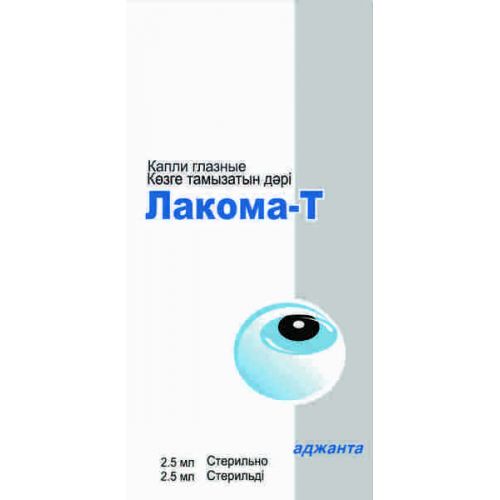
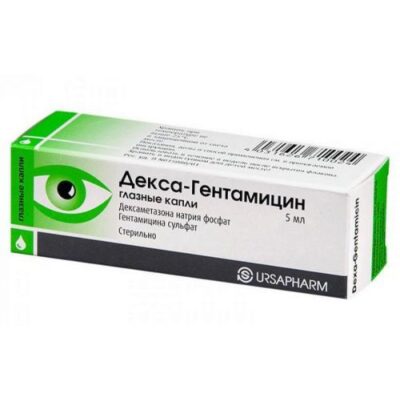
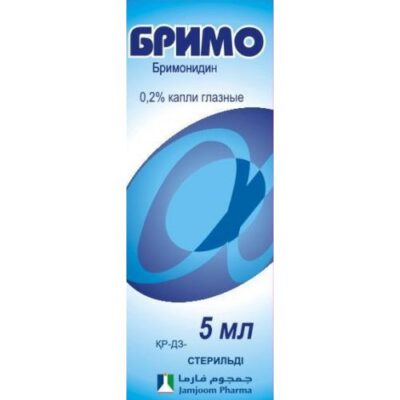
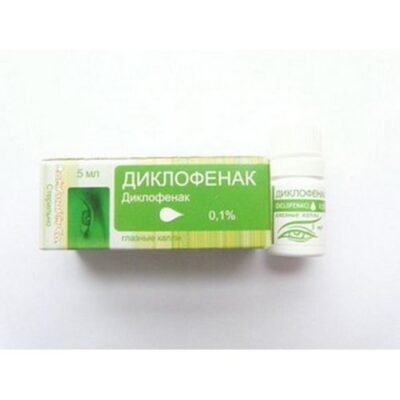
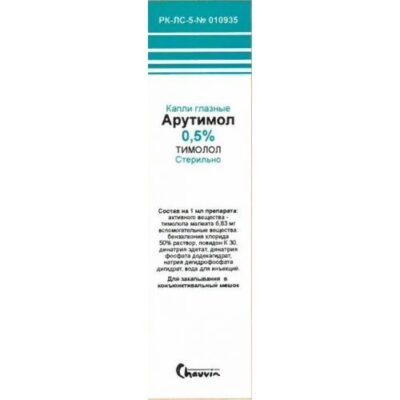
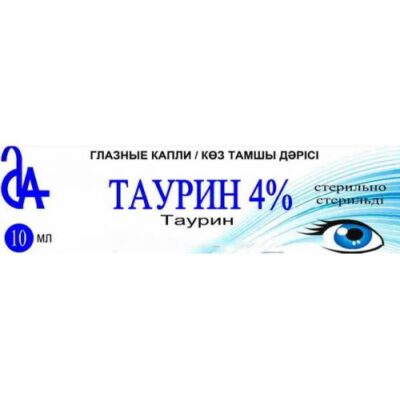
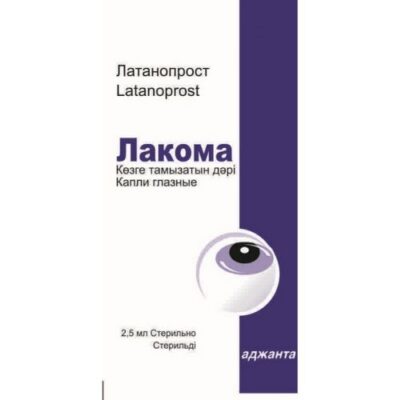
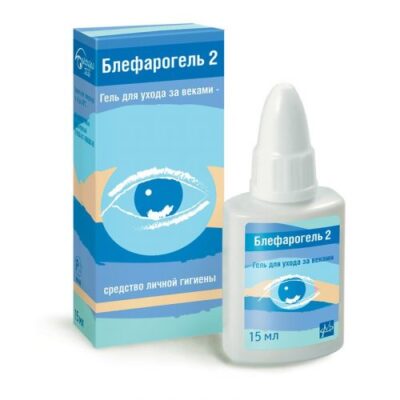
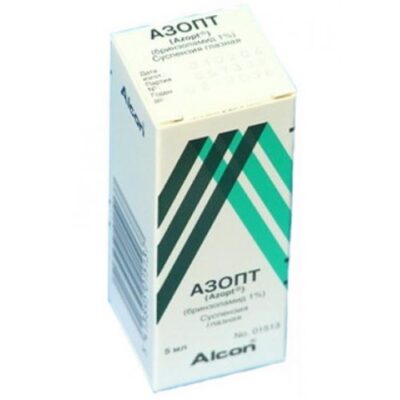
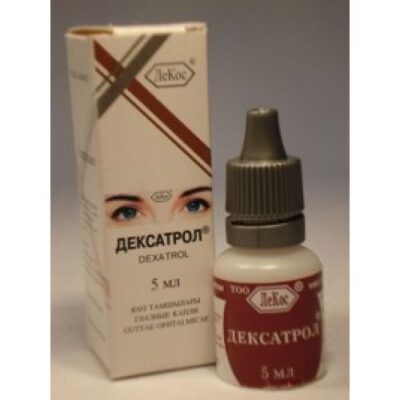
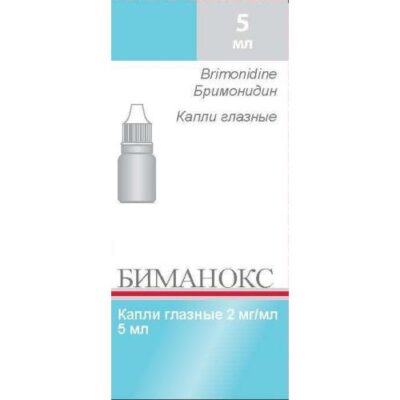






Reviews
There are no reviews yet.